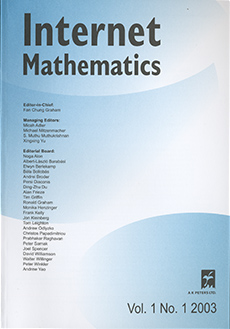Abstract
Since the first investigations on web-graph compression, it has been clear that the ordering of the nodes of a web graph has a fundamental influence on the compression rate (usually expressed as the number of bits per link). The authors of the LINK database, for instance, investigated three different approaches: an extrinsic ordering (URL ordering) and two intrinsic orderings based on the rows of the adjacency matrix (lexicographic and Gray code); they concluded that URL ordering has many advantages in spite of a small penalty in compression. In this paper we approach this issue in a more systematic way, testing some known orderings and proposing some new ones. Our experiments are made in the WebGraph framework, and show that the compression technique and the structure of the graph can produce significantly different results. In particular, we show that for a transposed web graph, URL ordering is significantly less effective, and that some new mixed orderings combining host information and Gray/lexicographic orderings outperform all previous methods: in some large transposed graphs they yield the quite incredible compression rate of 1 bit per link. We experiment with these simple ideas on some nonweb social networks and obtain results that are extremely promising and are very close to those recently achieved using shingle orderings and backlink compression schemes.
Citation
Paolo Boldi. Massimo Santini. Sebastiano Vigna. "Permuting Web and Social Graphs." Internet Math. 6 (3) 257 - 283, 2009.
Information




